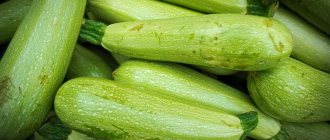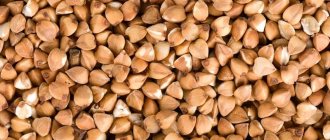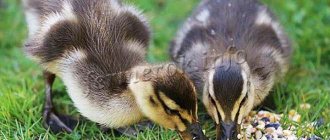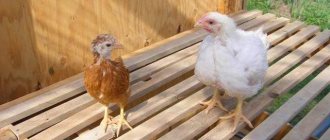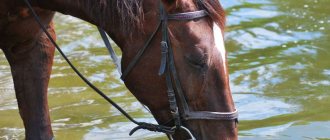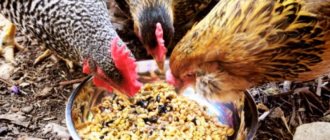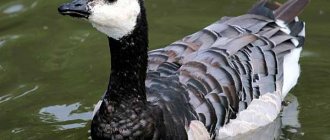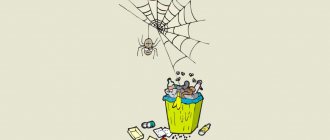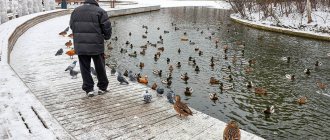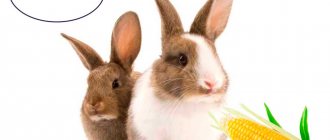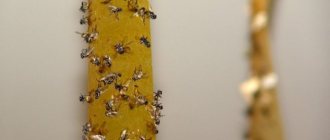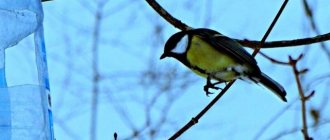If we briefly answer the question of whether it is possible to give chickens polystyrene foam, then for most farmers, the answer lies on the surface, and it is an unconditional “No” with a capital letter!
You don’t have to go far for explanations: polystyrene foam is a material of artificial origin, so you shouldn’t count on its positive effect on the body.
However, when raising chickens, many novice owners of small private farms are guided by popular opinion, which does not always exclude this “product” from the chicken diet.
Why do chickens eat styrofoam?
There are many versions explaining such a harmful hobby, but they are all just assumptions. Chickens' love for polystyrene foam still remains a mystery, shrouded in darkness.
A hit parade of popular guesses why chickens love to peck foam:
- Birds mistake foam for calcareous material , which is so necessary for digestive processes. In particular, lime helps process grain feed.
- Curiosity. In this regard, the saying “Curious Varvara’s nose was torn off” sounds very appropriate. However, if you frequently consume toxic material, you can lose not only your nose, but also your life. Since polystyrene foam has a grainy structure, inquisitive birds consider it their duty to test this unusual material for a taste. Plus, it's crunchy!
- Drug addiction. This rather incredible assumption has well-reasoned arguments: the composition of foam granules includes pentane gas, inhaling which the birds experience a state similar to alcoholic intoxication. It's not just chickens that get attached to the foam: ostriches are also often caught in the act. (Pentane gas contained in polystyrene foam can cause drug addiction.)
- Salt. The “white death” contained in the foam does not repel birds. In some cases, they thus compensate for the lack of this element in the body.
- Ball shape. Often grains of this material are associated in the minds of chickens with grain. Cereals are very healthy food; therefore, the bird eats harmful grains with a clear conscience.
- Woe from the mind. Chickens are unfairly considered stupid creatures and they are attributed to eating foam as the easiest way to kill time and not get bored. It was noted that, out of boredom, birds can even indulge in pecking at their own kind.
Indeed, from the point of view of chickens, polystyrene foam is similar to grain.
It is still not clear why the bird does not intuitively cross out this “product” for itself, but it is difficult to call them stupid.
Scientists recently discovered that clucking is not a random set of sounds, but a chicken language, which American scientists have begun deciphering.
They are already able to identify several phrases of talkative laying hens and cockerels, the approximate meaning of which is: “Everyone here, there are a lot of grasshoppers here” or “See you soon, it’s time to lay an egg.”
Side effects of using polystyrene foam
We looked at the possible reasons why chickens eat foam. The conclusion is that polystyrene foam is harmful to chicken health. This compound is almost 100% gas.
If chickens eat styrofoam, certain problems with their health will arise. When pecked, the small balls break up into smaller pieces. It is with their help that the chicken crop can become clogged.
With a clogged crop, birds become lethargic, and the appetite and weight of chickens decreases. Further sad consequences are inevitable. You should protect your chickens from such dangerous food in a timely manner to save the lives of your chickens.
Harm to health from polystyrene foam
Despite the fact that this material is widely used in construction work, its adverse effects are usually kept silent:
- during combustion it releases strong poisons;
- even at room temperature, a toxic substance harmful to the body, styrene, is released;
- phenol and formaldegin, which are part of polystyrene foam, are also undesirable guests of any living organism.
In addition, the material has low vapor permeability. Considering that it is often used as internal thermal insulation, without even penetrating inside the body, it poses a danger: the walls stop breathing and allow water vapor to pass through, worsening the ventilation system.
It should be remembered that the polymer base of the foam can be:
- polystyrene;
- polyvinyl chloride;
- polyurethane;
- epoxy resin;
- phenol-formaldehyde and organic resin;
- silicon.
Each of these elements in itself is harmful to the health of birds, and in combination with their own kind they create a dangerous mixture.
Scientists do not give clear explanations as to whether these harmful substances are retained in the body of chickens, or are excreted along with feces, but until there is accurate information on this matter, it is better to keep birds from eating it.
Contact of birds with this material should be avoided for at least one objectively proven reason: blockage of the crop. It leads to the fact that birds lose their appetite, become lethargic, quickly lose weight and do not search for pasture.
The culprit for this behavior is foam stuck in the crop. If it is not removed promptly, it will be fatal.
Preventive measures
So, if we take as a basis the idea that polystyrene foam in the diet of chickens is a foreign product, you can rid the bird of a “bad habit” using very simple measures:
- do not use “narcotic” material for interior decoration of the poultry house;
- monitor the timely disposal of polystyrene foam packaging; do not leave them in places that poultry have access to;
- if there is foam insulation on the outer walls of the poultry yard, hide it securely behind the finishing material;
- do not allow children to feed “balloons” to chickens as entertainment and a fun game;
- monitor the correct and balanced nutrition of the feathered flock (the less deficiency in important components the bird experiences, the higher the likelihood that it will not show an unhealthy interest in inedible items).
It's easy to summarize. Chickens just love foam. This fact is confirmed by many farmers. And although there is no answer yet to the question about the dangerous origin of such a strange taste preference, it is better to try to limit the access of the feathered inhabitants of the farmstead to material not intended for consumption. This is not difficult to do - you just need to show a little attention and caution.
What to do?
If this problem occurs, it is necessary to take a number of simple actions to avoid deterioration in the health of the livestock:
- Do not insulate the chicken coop with foam packaging.
- If the house was lined with foam plastic, the facing material should be replaced.
- If the “presence” of polystyrene foam is necessary in some places, access to it by birds should be limited.
- If you do not want to refuse to use this material for insulation purposes, you need to hide it under the upholstery.
- Construction waste should not be thrown out in the area adjacent to the poultry house, as the wind can carry it into the building.
- Balanced diet. When the bird receives all the elements it needs in sufficient quantities, it may no longer need this kind of feeding.
By following these simple recommendations, you can avoid unwanted situations.
Features of feeding
To prevent birds from becoming addicted to this harmful “chewing gum,” it is advisable to review their culinary scheme to ensure that all the necessary elements are present.
When breeding chickens in order to obtain hatching eggs, in addition to the listed ingredients, you need to include food rich in easily digestible protein.
Products that enrich the diet of birds:
- sprouted grain: per day, one animal should be given about 40 g of this healthy delicacy. It contains many essential elements in large quantities;
- B vitamins: found in yeast, which can be added to food daily in quantities of up to 5 g;
- fish oil: very useful for chickens during egg laying. You can give 1 g every day;
- feeding in the form of large shell rock, ground bones or crushed chalk.
Any supplements should be given in doses, since their excess can lead to hypervitaminosis.
Consequences
The effect of polystyrene foam on the health of chickens has not yet been fully studied. But the composition of such “food” does not contain a single useful element. Along with the white granules, dangerous poisons also enter the chicken’s body. Scientists still have not figured out whether these poisons remain in the poultry meat or whether the body is cleansed of them and they leave it along with the feces. If eating polystyrene foam was a one-time event, we can assume that it did not cause much harm to either the bird or the people who would then eat its meat. Although it is better to watch such a black-billed bird for some time and make sure that everything is fine with it and that it does not get sick. If the use of building material is regular and constant, this is a reason to think about the quality of the meat of this bird, because the likelihood that dangerous poisons have accumulated in the tissues of its body is extremely high. It is not safe for humans to eat such meat. The granules of this substance are inedible, they are practically not digested and therefore do not move through the intestines and do not come out with feces, as happens with shell rock or gravel.
Important! Polystyrene foam causes blockage in the crop and intestines of chickens, which causes obstruction and often causes the death of the bird. When this problem occurs, the bird becomes lethargic, weak, loses appetite, and a lump in the crop is easily palpated
Sometimes a chicken can be saved by quickly clearing the crop of harmful contents, but this is possible if you act quickly and if the blockage is not too extensive. But in most cases, in this state, the bird is sent for slaughter, which is also not the best way out of the situation, given the health risk posed by the meat of a chicken that has eaten polystyrene foam. Find out how to properly germinate wheat for laying hens.
Expanded polystyrene is a material whose safety is questioned even in the absence of constant contact with it. Eating styrofoam by black whales is fraught with blockage of the crop, dependence on the substance for their health, and becomes the reason that poultry meat is unsafe for human consumption due to the toxic substances it contains.
>Video: polystyrene foam - a treat for chickens
Harmful feed for chickens
- Green potatoes, their tops and green tomatoes. A high content of solanine, especially in tops and sprouted potatoes, negatively affects the health of the chicken, causing diarrhea and vomiting. The poison is not neutralized after heat treatment.
- Smoked meats. Salt contained in large quantities becomes a poison that slowly destroys the body. The permissible dose of white crystals in their pure form is only 3 - 5 g per 1 kg of feed.
- Beet. Must be given in small quantities. For chickens, it acts as a laxative and provokes diarrhea, which can lead to apathetic states. In addition, it gives the cloaca a red color, which encourages other chickens to peck and cannibalize.
In addition to these food enemies, you should avoid feeding your birds the following ingredients:
- citrus peel;
- black bread;
- celandine;
- ambrosia;
- sweet or salty food waste.
How to protect polyurethane foam from birds
Most likely we are talking about polyurethane foam located outside the room; if a pet parrot is mischievous, destroying the foam from the inside, then give him a physical reprimand and lock him in a cage.
If it is outside, then it is strictly forbidden to leave the foam in its “pure” form; the foam very quickly becomes unusable due to UV radiation (sun), and loses all its properties.
Cut the foam a couple of mm deeper than flush
and then plaster, or putty, you can use reinforcing mesh.
The foam can be covered with flashings, or with platbands.
The foam can be painted with exterior paints, but not with oil-based paints; birds may continue to peck at oil-based ones.
Of the proposed options, the best in terms of price-quality ratio is plaster.
For external work, cement plasters are used, a cement-sand mortar, very durable, this plaster will withstand the pressure of any beak.
At the finish line, anything, if not expensive, then the plaster can be painted.
If you meant log frame and foam (this is the worst caulking option in my opinion),
that is, there are special strips on sale like flashings, or just paint the foam, but it must first be trimmed.
How to feed laying hens at home?
So what do you need to know about it? Many novice farmers are interested in what they can and cannot feed domestic chickens. Typically, garden and kitchen waste is used for this purpose. Poultry can be given potatoes that are unsuitable for use. Green, too small or sprouted tubers are suitable. Chickens are also given potato peelings. One bird can eat 50-100 grams of such food per day.
It is also advisable to give chickens bread in dry or soaked form. You can also include ground bones, leftover meat, and fish offal in your diet. Beet and carrot tops, leftover berries and fruits are great for laying hens. You can make a mash from these ingredients.
If you want to run a successful farm, you definitely need to know what you should absolutely not feed your chickens. These birds are practically omnivorous. Many breeders use this. They use stale and spoiled food as food. This can lead to disease and eating disorders in birds.
How much feed does a laying hen need per day?
Laying hens, depending on the breed and egg production, can have different weights. Accordingly, they should receive different amounts of food. For example, an ordinary domestic chicken weighing up to two kilograms, producing hundreds of eggs annually, normally needs to eat about 125 g of feed per day. A bird with a body weight of two kilograms will need 130 g of food.
Is it harmful to give chickens styrofoam?
I was advised to give the chickens styrofoam. I give, they really like it. Who knows if this is harmful?
Try eating yourself.
If I needed and had a craving for polystyrene foam, I would try it.
Who could have advised this?
Horrible! Who advised this? And most importantly, why? What's the use of this?
You don't know this person. If I wish, I can introduce you to you, but the question was, who knows, is it harmful?
And my teenage chickens found the TV box themselves and pecked it themselves.
But that means there is something there that makes them squeak. And what is the horror, do you know its composition? And if chickens are walking in the yard, they won’t even peck at you.
I don’t know if it’s terrible or not, but my chickens peck too!
Do you think it's useful?
If I counted, I wouldn't ask.
Yandex has the composition of polystyrene foam, read it and you will understand for yourself whether it is worth feeding it to chickens.
It seems to me that it just looks like grain - chickens have a rather primitive way of thinking. My chickens were also always very happy when they found a piece. And their stomach probably digests everything. I read somewhere that turkeys digested nails - so polystyrene foam for chickens! Good luck everyone!
The veterinarian will be horrified by such advice and answers. You are an adult, think about what a turkey’s stomach must consist of in order to digest nails and iron.
Thank you. I just went to the forum. Many people have chickens that eat it. But its composition is poisonous. It’s not clear what the chickens found in it?
That’s the horror, that the composition is poisonous, and there is zero benefit. Chickens peck at everything, and the owners’ task is to watch and remove all the nasty stuff in a timely manner.
Thanks everyone, I won't give any more. My question was not in vain, I think for many, since I have just joined the forum. Many people provide polystyrene foam, and some have their chicken coop insulated with it, and the chickens peck at it.
My chickens started pecking the foam out of the cracks, so I had to block everything off.
Our geese ate all the walls with whatever they needed to insulate. Now we just want to sheathe the street side.
I have a block chicken coop, and I also whiten the inside with lime, so they peck at it like crazy, but I think it’s not harmful.
We still need to look. But I think this is not the first time they have been bitten by this.
As far as I know, chickens have always pecked at polystyrene foam, but there have been no consequences from this in my lifetime. And we always had chickens. On the contrary, the old people said that polystyrene foam cures snoring in chickens. The composition of the foam is 98% air. Typically, animals, unlike people, do not eat chemicals. When the example was given with bread, the pigeons did not eat it in a program I don’t remember. Nowadays the market sells products with worms, but GMOs do not contain worms. So you can't fool the animals.
My elderly neighbor had a cow, so she generally loved to chew bones, chewed plastic bags in trash cans and all sorts of rubbish. As it turned out later, from childhood she was stuffed with mixed feed, which included bone meal and who knows what. So she still had a craving for bones...
Polystyrene foam is pure chemistry. If you want to ruin your liver with these eggs, you can feed the chickens with polystyrene foam (veterinarian).
Thank you very much. Very instructive information for us.
Chickens (guinea fowl) like polystyrene foam, I will pamper mine. We conducted studies of eggs and tissues (chemical and biochemical) and did not find any foreign components.
Chickens (guinea fowl) like polystyrene foam, I will pamper mine.
Liked and useful (safe) are like completely different things.
Chickens at poultry farms really like the compound feed they are fed - how do you like the testicles from such chickens?
We conducted studies of eggs and tissues (chemical and biochemical) and did not find any foreign components.
Oh well. Bon appetit )))
Did the research not happen in a school laboratory by chance?
